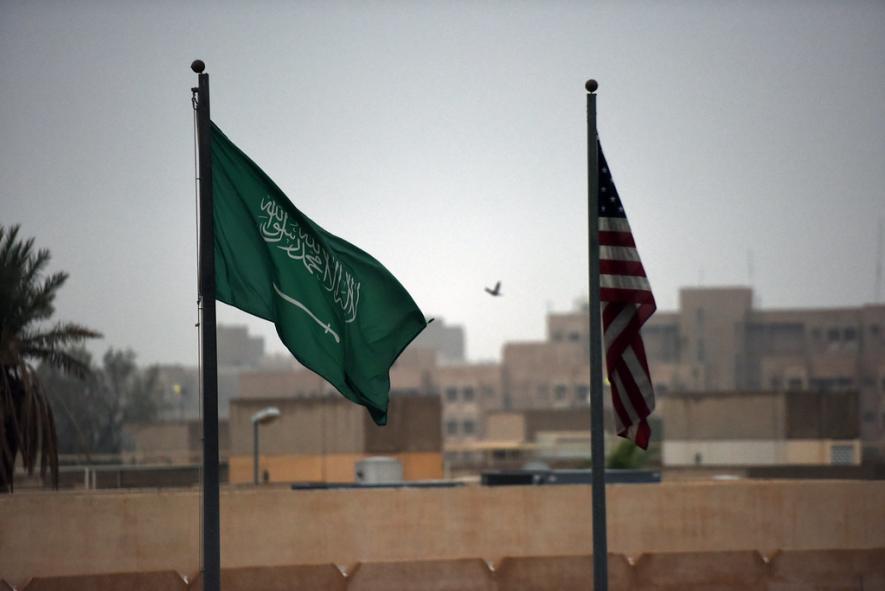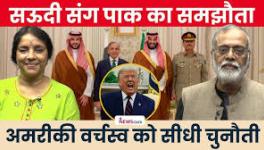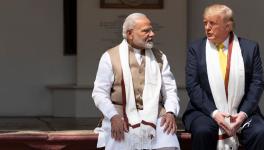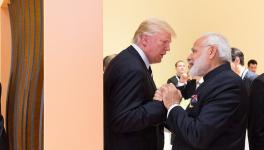US’ Coercive Diplomacy With Saudi Arabia

Representational image. | Image courtesy: Flickr
Some three weeks after the reported meeting of the CIA chief William Burns with the Crown Prince of Saudi Arabia Prince Mohammed bin Sultan, the OPEC+ ministerial held a video conference on Thursday.
The OPEC+ meet drew satisfaction that “continuing oil market fundamentals and the consensus on the outlook pointed to a balanced market.” The press release issued in Vienna says the ministerial “further noted the continuing effects of geopolitical factors and issues related to the ongoing pandemic” and decided that the OPEC+ sticks to the monthly production adjustment mechanism agreed in July last year “to adjust upward the monthly overall production by 0.432 million barrels/day for the month of June 2022.”
As per the former publisher of the Journal Karen Elliott House, Burns came to Saudi Arabia for a “mating dance” with Prince Mohammad — namely, the Prince must cooperate on a new oil-for-security strategy to “increase production to save European nations from energy shortages.”
Burns’ visit to the Kingdom took place just ahead of the 5th round of Saudi-Iranian normalisation talks in Baghdad between the Saudi intelligence chief and the deputy head of Iran’s Supreme National Security Council. The Iraqi Prime Minister Mustafa al-Kadhemi who was acting as mediator and attended the latest round of talks told the state media last week, “Our brothers in Saudi Arabia and Iran approach the dialogue with a big responsibility as demanded by the current regional situation. We are convinced that reconciliation is near.”
Nournews, affiliated to Iran’s Supreme National Security Council, also reported on April 24 that the fifth round of talks on a possible détente was “constructive” and the negotiators managed “to draw a clearer picture” of how to resume bilateral relations, and, “given the constructive bilateral dialogue so far, there is a possibility of a meeting between the Iranian and Saudi top diplomats in the near future.”
Burns’ mission couldn’t have been indifferent toward the Saudis’ reconciliation track with Tehran. With the outcome of the JCPOA talks in Vienna uncertain, Iran’s close ties with Russia and China remains a major worry for Washington. And with Tehran’s stubborn refusal to trim its regional policies to suit US regional strategies, Washington has fallen back on the default option to resuscitate the anti-Iran front of its regional allies. The US hopes that Saudi Arabia will come on board the Abraham Accords.
Meanwhile, the issue of oil prices has returned to the centre stage. Indeed, high oil prices mean high income for Russia. Russia’s sales of oil and natural gas far exceeded initial forecasts for 2021 as a result of skyrocketing prices, accounting for 36% of the country’s total budget. The revenues exceeded initial plans by 51.3%, totalling $119 billion.
The Biden administration’s best-laid plans to cripple the Russian economy are unravelling. Equally, high oil price is also a domestic issue for Biden. Above all, unless Europe finds other oil sources, it will continue buying Russian oil.
However, Prince Mohammad has a different agenda. He is likely to rule Saudi Arabia for many decades—half a century if he lives to 86, his father’s age. And the Prince has been remarkably successful in creating a “power base”. His lifestyle changes have been a smashing hit with Saudis 35 and under—70% of the Kingdom’s citizens — and his ambition to transform Saudi Arabia into a modern technological leader ignites the imagination of the youth.
Clearly, his refusal to punish Russia and his gesture to place the princely amount of $2 billion in a new, untested investment fund started by Donald Trump’s son-in-law Jared Kushner speak for themselves. Prince Mohammed would have his own reasons too, starting with Biden’s contemptuous reference to Saudi Arabia as a “Pariah” state and refusal to deal in person.
The Prince hit back recently by declining to take a call from Joe Biden. Besides, the US’ restrictions on arms sales; insufficient response to attacks on Saudi Arabia by Houthi forces; publication of a report into the 2018 murder of Jamal Khashoggi — all these are in play here.
Even if the administration is able to get Congressional approval for new security guarantees for Saudi Arabia (which is rather problematic), Prince Mohammad may not be swayed, since at the end of the day, high oil prices boost Saudi budget too.
The paradox is, both Saudi Arabia and Russia are stakeholders in OPEC+ as is evident from the explicit warning to the EU by OPEC Secretary General Mohammad Barkindo last month that it would be impossible to replace more than 7 million barrels per day of Russian oil and other liquids exports potentially lost due to current or future sanctions or voluntary actions.
In such a torrential stream where crosscurrents are foaming and weltering, what probably unnerves the Biden Administration most could be the talk that Chinese President Xi Jinping may be planning to visit Saudi Arabia, amidst persistent reports recently that Riyadh and Beijing are in talks to price some of the Gulf nation’s oil sales in yuan rather than dollars, which would indeed mark a profound shift for the oil market and help advance China’s efforts to convince more countries and international investors to transact in its currency.
The Saudi explanation for the shift to the yuan is that the kingdom could use part of new currency revenues to pay Chinese contractors involved in mega projects within the kingdom domestically, which would reduce the risks associated with the capital controls Beijing imposes on its currency. But, for Washington, that means certain sensitive Saudi-China transactions in yuan do not appear in the rear view mirror of the SWIFT messaging infrastructure, making transaction monitoring unviable.
There are persistent US reports that with Chinese support, Saudi Arabia may be constructing a new uranium processing facility near Al Ula to enhance its pursuit of nuclear technology. Saudi Arabia’s generous $8 billion in financial support for Pakistan, unveiled this week, will almost certainly raise hiccups in Washington.
Saudi Arabia is a central pillar of China’s Belt and Road infrastructure initiative and ranks in the top three countries globally for Chinese construction projects, according to the China Global Investment Tracker, run by the American Enterprise Institute. Suffice to say, the CIA chief’s call could not have been for a friendly chat with Prince Mohammad.
MK Bhadrakumar is a former diplomat. He was India’s ambassador to Uzbekistan and Turkey. The views are personal.
Get the latest reports & analysis with people's perspective on Protests, movements & deep analytical videos, discussions of the current affairs in your Telegram app. Subscribe to NewsClick's Telegram channel & get Real-Time updates on stories, as they get published on our website.
























